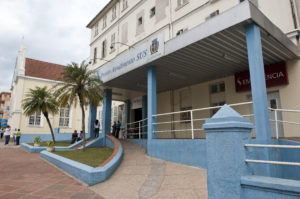Brazilian hospital A&E resource optinisation

Inferences from A&E data for resource optimisation in Brazilian hospitals
Dr Juliana Bowles, Dr Sandra Quickert, Dr Ricardo Czekster & Dr Thais Webber School of Computer Science & University of Santa Cruz do Sul, Brazil
Over the last five years, Brazil has suffered a significant recession. Healthcare has been particularly affected with continuous budget cuts, and a large part of the general population is unable to get access to basic healthcare. The National Health Service in Brazil (SUS) has struggled to satisfy demand for essential health services, leading to unnecessary deaths in many cases. Over the last five years, 24,000 beds have been lost across public hospitals in Brazil.
The aim of this project was to analyse services and processes currently in practice at two hospitals in the state of Rio Grande do Sul, in order to identify areas of improvement. The work shown concerns Hospital Santa Cruz do Sul, a community hospital that is currently running at a deficit of BRL$1m per month. It serves a population of around 500,000 people in the region of Rio Pardo.
We identified two areas to focus on: (i) shift changes, and (ii) procedural changes such as room cleaning and calling patients to consultation.
An analysis of the given A&E data revealed that in both areas there is a potential for improvement. The impact of the proposed changes is modelled using SAN (Stochastic Automata Network) and Arena (queueing simulation). Although the simulation work is still ongoing, we currently estimate that implementing all proposed changes could lead to increasing the number of patients seen per doctor per hour by three during peak times. The benefits of this would be twofold: (i) the waiting time for patients would be reduced, thus potentially leading to better health outcomes, and (ii) less patients would walk away while waiting to be seen, which leads to more patients treated and more money recovered for the hospital while using the same level of staffing.

